
|
Astronomy Picture Of the Day (APOD)
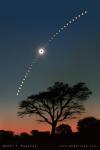 Eclipse Over Acacia
Eclipse Over Acacia
2.12.2002
On December 4th, for the second time in as many years, the Moon's shadow will track across southern Africa bringing a total solar eclipse to African skies. Reaching Africa just before...
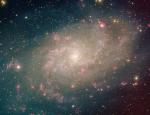 Nearby Spiral M33
Nearby Spiral M33
1.12.2002
Spiral galaxy M33 is a mid-sized member of our Local Group of Galaxies. M33 is also called the Triangulum Galaxy for the constellation in which it resides. About four times smaller (in radius) than...
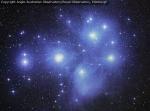 The Pleiades Star Cluster
The Pleiades Star Cluster
30.11.2002
It is the most famous star cluster on the sky. The Pleiades can be seen without binoculars from even the depths of a light-polluted city. Also known as the Seven Sisters and M45, the Pleiades is one of the brightest and closest open clusters.
 Surveyor Hops
Surveyor Hops
29.11.2002
This panorama of the cratered lunar surface was constructed from images returned by the US Surveyor 6 lander. Surveyor 6 was not the first spacecraft to accomplish a soft landing on the Moon ... but it was the first to land and then lift off again!
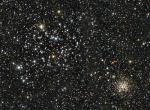 Open Star Clusters M35 and NGC 2158
Open Star Clusters M35 and NGC 2158
28.11.2002
Open clusters of stars can be near or far, young or old, and diffuse or compact. Open clusters may contain from 100 to 10,000 stars, all of which formed at nearly the same time. Bright blue stars frequently distinguish younger open clusters.
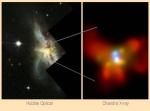 The Supermassive Black Holes of NGC 6240
The Supermassive Black Holes of NGC 6240
27.11.2002
The Hubble optical image on the left shows NGC 6240 in the throes of a titanic galaxy - galaxy collision 400 million light-years away. As the cosmic catastrophe plays out, the merging galaxies spew forth distorted tidal tails of stars, gas, and dust and undergo frantic bursts of star formation.
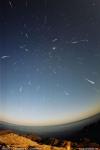 Leonids and Leica
Leonids and Leica
26.11.2002
This lovely view from northern Spain, at Cape Creus on the easternmost point of the Iberian peninsula, looks out across the Mediteranean and up into the stream of the 2002 Leonid meteor shower.
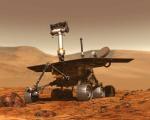 Name This Martian Robot
Name This Martian Robot
25.11.2002
NASA will launch two robots to Mars next year and you can help name them. The Mars Exploration Rovers are scheduled for launch on or near this coming June, when Mars and Earth are relatively close in their orbits.
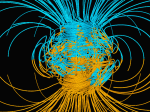 The Earths Magnetic Field
The Earths Magnetic Field
24.11.2002
Why does the Earth have a magnetic field? The electrical conductivity of the molten plasma of the Earth's core should be able to damp the current magnetic field in only thousands of years. Yet our five billion year old Earth clearly causes magnets to point to (defined) north.
 Hubble Floats Free
Hubble Floats Free
23.11.2002
Why put observatories in space? Most telescopes are on the ground. On the ground, you can deploy a heavier telescope and fix it more easily. The trouble is that Earth-bound telescopes must look through the Earth's atmosphere.
|
January February March April May June July August September October November December |
|||||||||||||||||||||||||||||||||||||||||||||||||